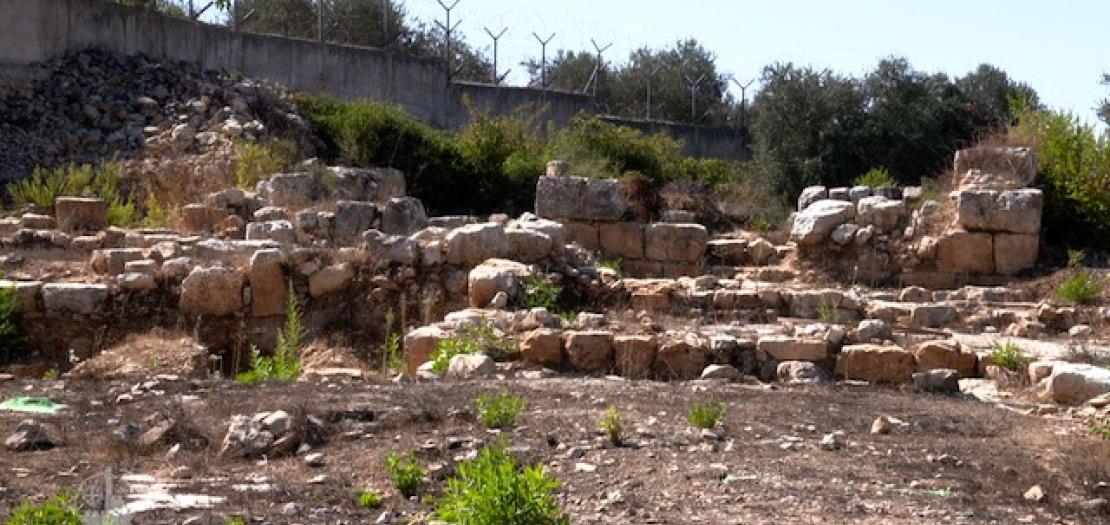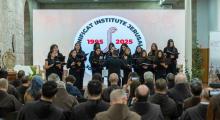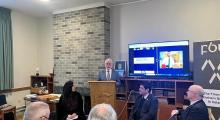Issued by the Catholic Center for Studies and Media - Jordan. Editor-in-chief Fr. Rif'at Bader - موقع أبونا abouna.org

Stones are scattered, silent, but somehow yelling that Christians should not abandon this land quenched by the precious blood of Christ.
Fr. Elias Awad, priest of the Greek Orthodox Parish in Ramallah, said, “As Christ has told us, ‘And you will be my witnesses on this earth until I come.’ Here we are steadfast in our land and holy places. We must stay here, to maintain our presence in the land of Christ.”
Fr. Awad added, “We are currently standing on the floor of a large church. It was about 30 meters long and 20 meters wide. Here, precisely before us, was the altar, and behind me was the wall of the altar, which is still standing until this moment. This room, recently renovated, was one of the rooms connected with the altar to keep the gadgets, the dress of the priest and all other things used on the altar.''
He pointed out that “These are remnants of the monastery. Here are the monks’ rooms, kitchen, and tables used by them, the corridors between the rooms, and behind us are the facilities of the monastery. Here we see the remaining pieces of the floor of the 4th-century church. These stones are the remaining parts of the church which were demolished during wars, invasions, and earthquakes also. The Christians in Jerusalem at that time decided to take the remains of St Stephen to the nearest place to preserve it. They decided to move his body to Beit Ghamlah here in this place, which was a city inhabited by Christians. The hope of the monks who lived in this monastery was to find the tomb of Saint Stephen."
The ruins of the two archaeological churches from the Byzantine era are located in Khirbet al-Tira, west of Ramallah. Al-Quds University, in cooperation with the Greek Orthodox Patriarchate, is carrying out archaeological excavations to restore this place to its former status, and to preserve our religious and cultural heritage.
The archaeological importance of the site is not greater than the religious and spiritual importance of the place, because it contains the remains of St Stephen the first martyr in Christianity.
Archaeological excavations are still ongoing looking for the tomb of St Stephen, to make the place a shrine for pilgrims.







